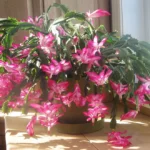Table of Contents
How to care for Dracaena draco, or Dragon Tree
Dracaena draco is better known by its common names, Dragon Tree, or Drago, and is native to the Canary Islands and western Morocco. It can be grown outdoors in warmer climates or indoors as a houseplant in temperate climates.
For everything you need to know about this beautiful tree, please read on below.
How to Care for Dracaena Draco
Description
Dracaena draco is better known as Dragon Tree, because its sap is crimson in color and is said to resemble the look of dragons’ blood.
The tree is an evergreen variety that can grow to up to 50 feet in height when cultivated outdoors, when grown indoors they can reach a maximum height of four feet.
The tree grows as a single trunk for its first ten-to-fifteen years, before branching out and creating a lush canopy. It is known for its smooth gray bark that darkens and cracks as it ages.
The tree has sword palm shaped leaves and mature trees may produce a yellow-green or white flower and fruit, when grown outside in the right conditions.
Mature trees thicken in size and have stout upper canopies, frequently they resemble an upturned umbrella.
What does your Dracaena Draco require?
Light Requirements
The Dracaena draco is happy in full-sun to part-shade. When grown indoors, be sure that it receives plenty of bright sun by placing it in an east-or-south-facing windowsill. Outdoors the tree will do best in bright, but indirect, sunlight.
It will tolerate less light and can even grow in low or medium light situations, though growth will be retarded.
Temperature Requirements
Dracaena draco can be grown outdoors in USDA heartiness zones 9b-11. Dragon Trees are actually capable of surviving cold snaps down to 34 degrees Fahrenheit, though not for long periods of time.
When cultivated outdoors they will do best in warmer climates-places with an average temperature approximately 70 degrees Fahrenheit year-round-that will maximizer their growth rate.
When grown indoors it does well with regular household conditions and can be happy in a range of 60-75 degrees Fahrenheit, but the warmer the better.
Soil Requirements
Dragon Trees prefer a moist, loamy soil. Dragon trees require soil that is mildly acidic, around 6.1-6.5 pH. Dracaena draco will be happiest when planted in a mixture of pumice, sand and potting soil. It will also be happy in a pre-mixed cactus potting soil.
Plan on repotting your tree to a larger container every few years when it is still in the growing phase. Once the tree has matured, place fresh topsoil around its root system every spring.
Humidity Requirements
Dragon trees are not particularly fussy about humidity and can survive well in most household conditions when grown indoors as houseplants.
If you are growing your plant indoors, and your house is particularly dry or arid, you may choose to mist your Dracaena draco once or twice daily.
How to Water
It may surprise you that such as showy and ornamental tree as Dracaena draco is actually drought tolerant. This means that the plant can survive prolonged periods without water.
Still, if you want your tree to have optimal conditions, it is best to water it infrequently, but deeply. This might mean that you water your tree less frequently than other plants you cultivate.
In practice this means that you should water your Dracaena draco roughly once a week during the spring and summer growing season.
In the fall and winter, watering can be ratcheted all the way back to roughly twice a month. If your tree is outdoors, it is especially important not to over water as this is the time of year, as that can cause root problems to occur.
How to Fertilize
No matter where your plant is placed, indoors or out, be sure to use a mild, slow-release fertilizer for your Dragon Tree.
Because of their slow growing nature, Dracaena draco, grown outdoors, require little fertilizer. It is best to undertake a course of fertilization after the plants dormant winter months.
This can be accomplished by feeding your plant roughly once every six months, usually at the very beginning and end of its growing season.
When fertilizing, be sure to use a nutrient-balanced, water-soluble fertilizer, using about half the recommended strength or dose. If you find your plant is growing slowly, even during the warmer months, you might want to consider fertilizing on a fortnightly basis.
When cultivated indoors your dragon tree should only be fertilized during the spring and summer months.
When grown as a houseplant, it is best to fertilize your tree with a similar half-strength fertilizer once or twice every two weeks, or as needed and recommended by your specific fertilizer.
Extra tips for Dracaena Draco
Pests & Diseases
While not a pest or disease, Dracaena draco is highly sensitive to fluoride in its water. If your tree’s leaves start to yellow or develop brown spots, it is usually because of this issue.
The solution is to use distilled water as its watering source, this can be accomplished by buying such water or making it yourself through boiling tap water and letting it cool.
Pruning
The first thing to remember when pruning you Dragon Tree is to be very careful around its trunk, especially if it is an already mature tree. This is because Dracaena draco bark is very sensitive, and if it is cut, it will bleed a red resin.
Afterwards, when its cut has healed, the resulting scar will last forever.
When reaching a mature age, Dragon Trees will naturally drop their lower leaves off their trunks, so pruning of these leaves is largely unnecessary.
Propagation
Propagating your Dragon Tree is simple if it has reached a mature state, about ten-years-old. Doing so will require a length of branched section around three feet in size.
Be sure to cut from just below a leaf node and to cut at a 45-degree angle. Stake your specimen, to prevent movement, in a sterile, sandy medium. Now you just need to wait for your cutting to display new growth to see if your propagation has been successful.
Photo by Angel Luciano on Unsplash



